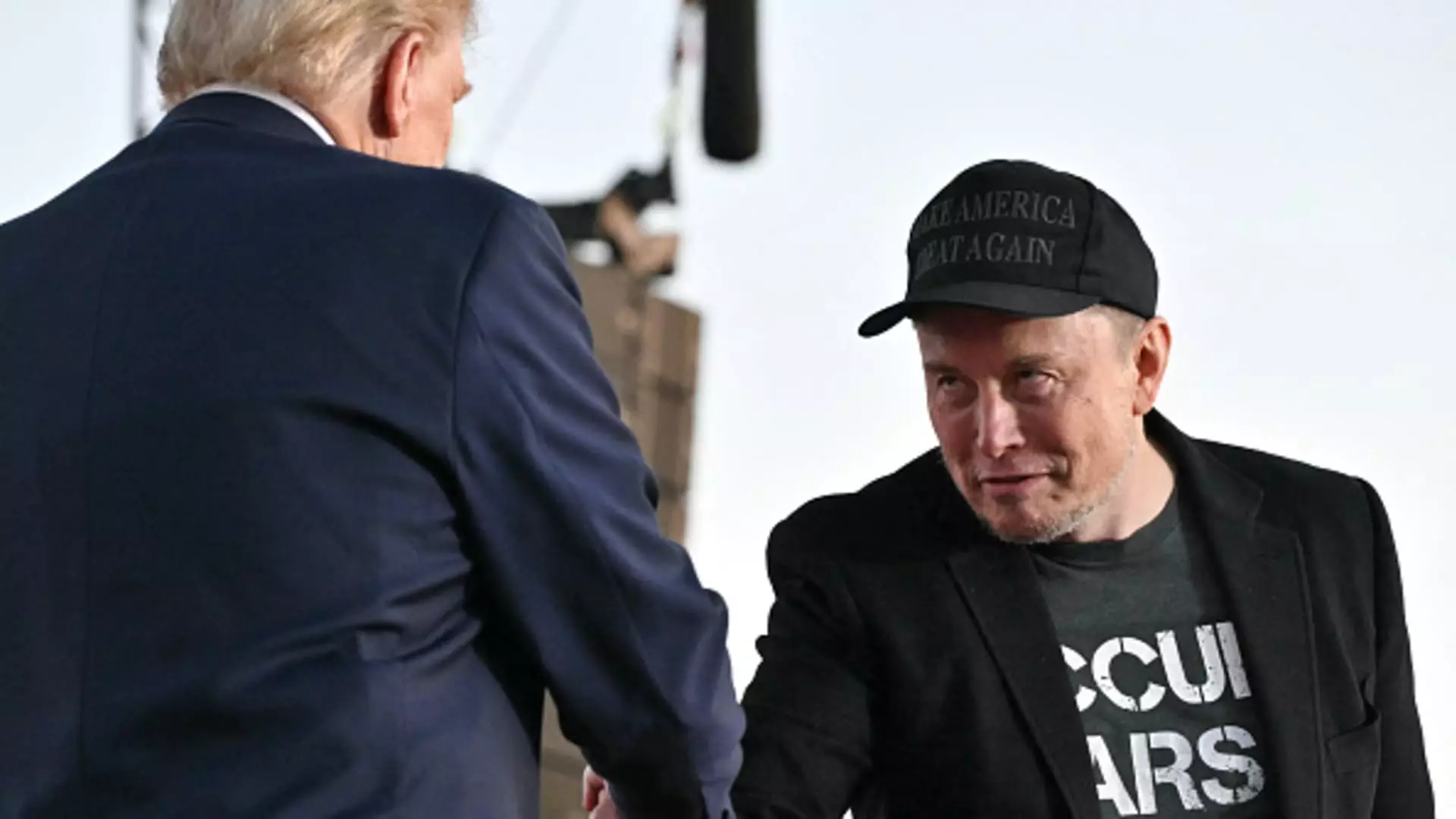Recent developments regarding self-driving technology regulation in the United States have significant implications for the automotive and tech industries, particularly for electric vehicle pioneer Tesla. A report emerged stating that President-elect Donald Trump’s transition team plans to prioritize the establishment of a federal framework for regulating autonomous vehicles through the Department of Transportation. Such a regulatory structure could not only reshape the industry landscape but also enhance Tesla’s market position, given its ambitions in the autonomous driving arena.
Tesla’s stock saw a notable uptick of nearly 8% in early trading following the announcement, showcasing how investor sentiment can shift dramatically based on regulatory news. The report from Bloomberg, which cited information from unnamed sources, indicated a growing optimism that federal regulations could pave the way for Tesla to more efficiently roll out its self-driving capabilities. However, it is essential to acknowledge that CNBC and other outlets could not independently verify the report’s details, hinting at the speculative nature of such market movements.
This surge reflects not only the anticipated financial benefits for Tesla if regulations align with its ambitions but also the larger narrative that investors are keenly aware of: the regulatory environment’s vital role in the development and deployment of new technologies. When companies are met with supportive regulatory frameworks, it fosters a climate conducive for innovation and can act as a catalyst for growth.
Central to this narrative is the relationship between Tesla CEO Elon Musk and Donald Trump, which has been highlighted throughout the recent election cycle. Musk, a significant player in the business community, advocated for Trump’s presidency, suggesting that his interests are intricately linked to the political landscape. The formation of a special Department of Government Efficiency—dubbed “DOGE”—under Trump, in which Musk is involved, could potentially create a more favorable environment for Tesla’s ambitious plans.
The implications of a close partnership between government leadership and business moguls like Musk are manifold. It raises questions about regulatory favoritism and the extent to which personal relationships can influence federal policies that impact entire industries. While some argue that such alliances could drive innovation forward, others express concern over the potential for regulatory capture, where regulations serve the interests of a few rather than facilitating public benefit.
Despite the excitement stemming from potential regulatory support, it is crucial to recognize the gap between Tesla’s goals and the reality of its self-driving technology. The company has long touted its vision for fully autonomous vehicles—referred to as “robotaxis”—but has yet to deliver a product that meets those claims without human oversight. The introduction of the Cybercab—a concept vehicle with no controls—demonstrates a shift toward a radical rethinking of urban mobility, yet its actual deployment remains uncertain.
As Tesla continues to pursue its goal of unsupervised driving over the next few years, it faces competitive pressure from well-established players like Waymo, which has already progressed further in launching functional self-driving cars on public roads. The urgency to achieve regulatory approval for autonomy grows as competitors push the envelope in a race to create reliable, fully autonomous vehicles.
The potential for federal regulations to formalize standards for self-driving technologies brings with it a dual imperative: to foster innovation while ensuring safety. The forthcoming regulatory framework could establish essential guidelines that not only allow companies like Tesla to innovate but also protect the public from the unforeseen consequences of deploying untested technologies.
Emerging from this landscape will require the careful selection of policy architects who understand both the technical intricacies of self-driving technologies and the broader implications on public safety. As the Trump administration seeks candidates for leadership positions within the Transportation Department, names like Emil Michael and various congressional representatives have emerged, indicating a push towards assembling a team that can navigate the regulatory challenges inherent in this rapidly evolving field.
In summation, the intersection of Tesla’s ambitions, regulatory dynamics, and the personal relationships between business leaders and government officials underscores a transformative moment for the self-driving vehicle landscape. As market investors react with optimism, the real test lies in Tesla’s ability to deliver on its ambitious promises while navigating an increasingly complex regulatory framework. The coming years will serve as a definitive period not only for Tesla and its stakeholders but for the entire automotive industry as regulators strive to balance the urge for innovation with the need for safety and public trust.

